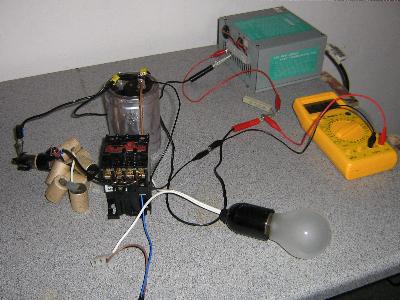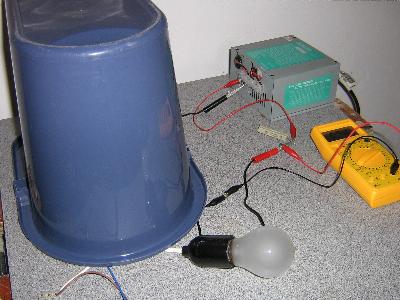Bringing dead NICD cells back to life
The procedure below involves very high currents and poisonous material.
If you decide to give it a try, take protective measures.
Use at your own risk.

Without cover
|

With protective cover
|
One or more large current pulses can bring a dead NICD cell back to life.
The capacitor limits the energy you put into the cell.
Use a beefy switch or relais between the capacitor and the cell.
The relais in the picture can handle 120A (4 times 30A).
The light bulb has no use, it's a leftover from another
exeriment.
The resistor limits the charging current of the capacitor when the
switch is open and the charging current of the cell when the switch is closed.
Take both limits into account when calculation its value.
![[nicd_zapper.png]](nicd_zapper.png)
Procedure:
- Connect a voltmeter across the capacitor.
- Connect 1 cell. Never try to zap more than 1 cell.
- Connect the power supply, e.g.
this one.
The power supply should be capable of delivering at least 350mA.
If not, increase the resistor.
- Charge the capacitor to approx. 40V.
- Energize the relais or close the switch.
There's no need to disconnect the power supply.
- Repeat the last 2 steps until the voltage across the cell reaches 1V.
- If all cells start charging, charge the whole pack with 0.1C during
14 hours.
If all went well you have extended the life of your battery pack.
Don't be surprised if it fails again after a while.
References:
Archive containing the Xcircuit file (encapsulated postscript).




![[nicd_zapper.png]](nicd_zapper.png)